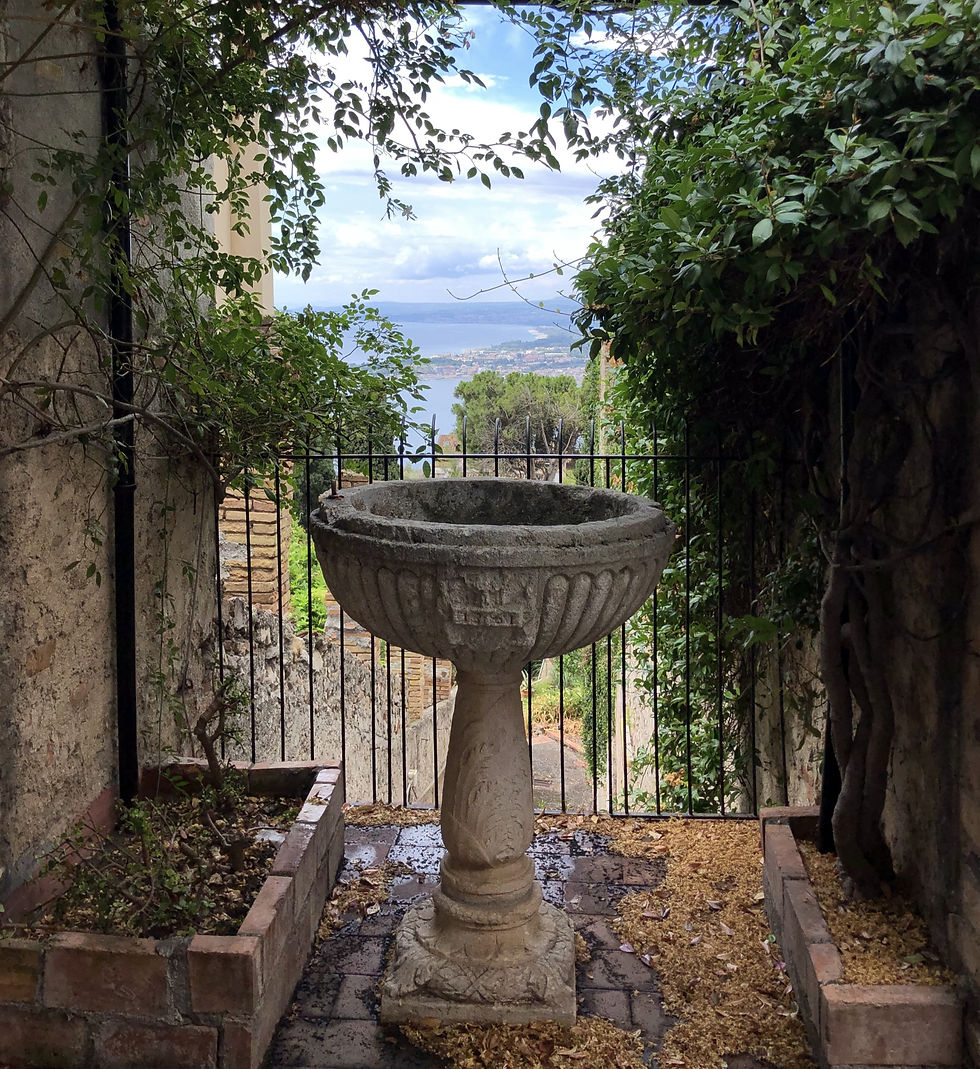Yesterday, we successfully pushed south and escaped the strong winds and rains north of the Straits of Messina. But the weather caught up with us. Today, there is a bank of rain coming in from the northwest every two or three hours. At least, in the Bay of Naxos, just south of Taormina, we are well protected from the northerly winds and can stock up on red wine from Sicily - with out consumption level we already run out of reds.

Taormina behind our boat - photo taken from the new drone we have since yesterday!
Gave me time to think about what I wrote in E + 5 about the puzzle of Taormina and how I could not reconcile the size of its theatre with the size of town. Proofed that my starting assumption was wrong. The theatre is less old than I believed.

Taormina's large Greek theatre, enlarged by the Romans - photo taken last week
I thought it dates back to the 5th century BC but it is far younger and was built by the Syracusan King Hiero II in the 3rd century BC only. The nearby town of Naxos, Syracuse’s main rival, was destroyed more than 150 years earlier, in 403 BC. At the time of the theatre’s construction, Hiero II ruled over Sicily’s entire east coast up to Taormina. His earlier attempts to also take Messina were thwarted by Carthage. Hiero II was a loyal Roman ally in the second half of the 3rd century BC and supported Rome logistically.

Interesting Mix of Medieval Norman Style and Spanish Baroque on the Main Square
The Greek theatre in Taormina must have been one of his show pieces to demonstrate his power and wealth. It is the only stand-alone Greek theatre I know and must have been built for the view and the entertainment of the Syracusan elite. It did not have a political function like other Greek theatres which were important parts of their polis. With 5’000 seats it was still big for an area only settled with villas and country houses. I guess it was used for early types of festivals. Travelling to such a beautiful place like Taormina was time consuming 2’300 years ago. People could not just come for a performance in the evening.

View from Taormina over the Bay of Naxos, once the site of Syracuse's main rival
Under Emperor Augustus, Taormina became a Roman colony. In other words, a settlement for veterans and retired military leaders. Since agriculture is limited here, there must have been Roman villas with lush orchards scattered over the landscape. It would explain why the Romans increased the size of the theatre from 5’000 to 10’000 seats. During Roman times, towns did not need town walls. The Roman Legions and the Navy were strong and could intercept enemies far away at the borders. It is well possible that Taormina was already 2’000 years ago a center for pleasure, relaxation and enjoyment – since Romans rarely travelled for fun it cannot have been a holiday resort. But I guess a good proxy to one.

Tomorrow will be a Norman day, when times were so dangerous that everybody moved away from the cost into fortified villages and towns on hilltops. Taormina became one of them and the Norman rulers felt very happy here too. More about this in tomorrow’s blog.
It was built by the Syracuse King Hiero II (306 – 215 BC), 150 years after his predecessor, King Dionysius, conquered and completely destroyed Naxos in 403 BC. There was no connection between the two. At the time of the construction of the theatre, King Hiero ruled the entire east coast of Syracuse up to Taormina and was allied with the Romans during the second Punic war. His earlier attempts to conquer Messina were almost success
Comments